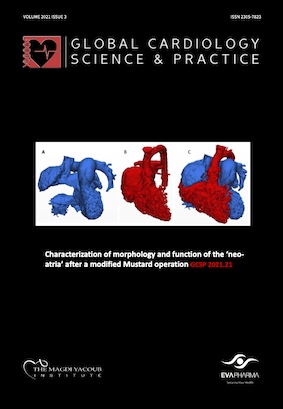Hypertriglyceridaemia: Contemporary management of a neglected cardiovascular risk factor
DOI:
https://doi.org/10.21542/gcsp.2021.19Abstract
Hypertriglyceridaemia represents one of the most prevalent lipid abnormalities, however it is often eclipsed by focus on LDL cholesterol and is frequently overlooked by clinicians, despite it being an important cardiovascular risk factor. For most patients, hypertriglyceridaemia arises from a combination of environmental factors and multiple genetic variations with small effects. Even in cases with apparent familial clustering of hypertriglyceridaemia, a monogenetic cause is rarely identified. Common secondary causes include obesity, uncontrolled diabetes, alcohol, and various commonly used drugs. Correction of these factors, along with lifestyle optimisation, should be prioritised prior to commencing medication.
The goal of drug treatment is to reduce the risk of cardiovascular disease in those with moderate hypertriglyceridaemia and the risk of pancreatitis in those with severe hypertriglyceridaemia.
Recent and ongoing trials demonstrate the important role of triglycerides (TG) in determining residual risk in patients with cardiovascular disease (CVD) already established on statin therapy. Novel and emerging data on omega-3 fatty acids (high-dose icosapent ethyl) and the selective PPAR modulator pemafibrate are eagerly awaited and may provide further clarity for clinicians in determining which patients will benefit from TG lowering and help inform clinical guidelines. There are numerous novel therapies on the horizon that reduce TG by decreasing the activity of proteins that inhibit lipoprotein lipase such as apolipoprotein C-III (including Volanesorsen which was recently approved in Germany) and ANGPTL 3/4 which may offer promise for the future.
Downloads
Published
Issue
Section
License
This is an open access article distributed under the terms of the Creative Commons Attribution license CC BY 4.0, which permits unrestricted use, distribution and reproduction in any medium, provided the original work is properly cited.


